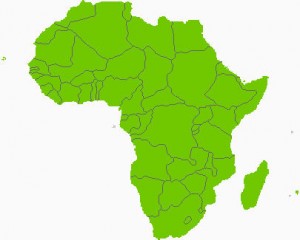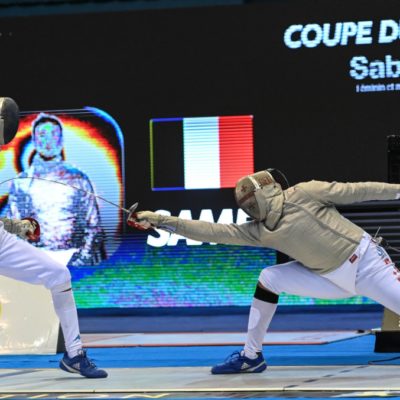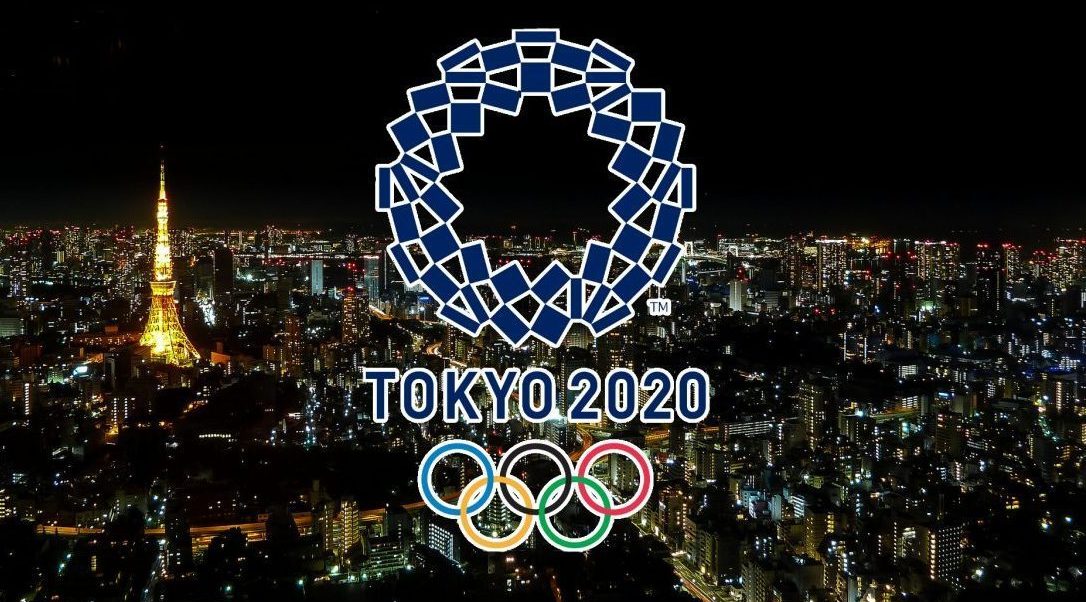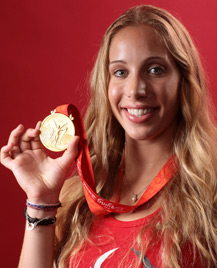
The 8th and final Olympic Qualifying World Cup concluded on March 27, 2004. Based on those results the direct qualification to the Athens Games is set. The big winners were France, China, and the United States who all qualified multiple fencers to the event.
How are the athletes chosen for the Olympics?
Since the women’s saber event is only an individual and not team competition, 24 fencers are chosen to compete in the tournament. The top 8 in the World rankings get their tickets punched (but only 2 can go from the same country from this set.) After the first 8 are chosen, the next 8 in are picked by region based on adjusted world rankings. (There are 3 slots for Europe, 2 for Asia, 2 for the Americas, and 1 for Africa.) The last 8 qualify based on continental competitions where countries that haven’t qualified any fencers on the first 2 rounds. In the last round, the allocation of slots remains at 3 Europe, 2 Asia and Americas, and 1 for Africa.
In no case can a country have more than 3 individuals compete in the individual event, and no country that has qualified an individual by top-8 ranking or region-adjusted rankings can send a fencer to the continental qualifying competition. This means that the only way a country can send 3 fencers is to either have all 3 in the top-8 or 2 in the top-8 and the third through the adjusted world ranking.
Who gets to go?
France did the best job in the World Cup season earning berths for the maximum of 3 fencers allowed for any country. The United States and China each qualified 2 fencers to the Games, and seven other countries each get to send one athlete. The table below shows a breakdown of the 16 athletes already qualified for the Athens Olympics.
| Qualification | Name | Country | World Rank | Points |
| 1 – #1 World Rank | Sada Jacobson | USA | 1 | 226 |
| 2 – #2 World Rank | Elena Netchaeva | RUS | 2 | 175 |
| 3 – #3 World Rank | Aleksandra Socha | POL | 3 | 163 |
| 4 – #4 World Rank | Xue Tan | CHN | 4 | 151 |
| 5 – #5 World Rank | Gioia Marzocca | ITA | 5 | 143 |
| 6 – #6 World Rank | Elena Jemaeva | AZE | 6 | 138 |
| 7 – #7 World Rank | Anne Lise Touya | FRA | 7 | 128 |
| 8 – #8 World Rank | CecileArgiolas | FRA | 8 | 113 |
| 9 – Zone: Europe | Susanne König | GER | 9 | 109 |
| 10 – Zone: Americas | Emily Jacobson | USA | 10 | 98 |
| 11 – Zone: Europe | Dorina Mihai | ROM | 12 | 95 |
| 12 – Zone: Europe | Leonore Perrus | FRA | 14 | 82 |
| 13 – Zone: Asia | Ying Zhang | CHN | 23 | 40 |
| 14 – Zone: Americas | Ana Faex Mielin | CUB | 28 | 33 |
| 15 – Zone: Asia | Shin-Mi Lee | KOR | 31 | 26 |
The remaining 8 slots will be decided in April at continental qualifying competitions which are open to those countries which have no-one selected by the two preceding criteria (3 for Europe, 2 for Asia, 2 for America and 1 for Africa).
The continental competitions are open to any country which did not qualify a fencer through a world ranking or zonal slot. Each eligible country is allowed to send one fencer.
The Africa Question – Will the US get to send a 3rd?
In the table above, only 15 out of 16 available slots were allocated. This is because of the lack of participation this season by fencers in the African zone in Women’s Sabre. The top African fencer in the FIE World Rankings comes in at 104 with the only result being a 59th place finish at the 2003 World Championships.
In the case of a national federation choosing not to send an athlete, the invitation then goes to the next highest ranked fencer, which in the case of the African Zonal slot would go to Mariel Zagunis of the United States. The African Continental Qualifying slot would then go to Romania’s Catalina Ghoerghitoaia.
The continental qualifying competitions occur through April with invitations sent by the FIE to the nations in May. The national federations have until May 31st to accept invitations for their athletes and then any unclaimed slots are reallocated to athletes after June 1st.





